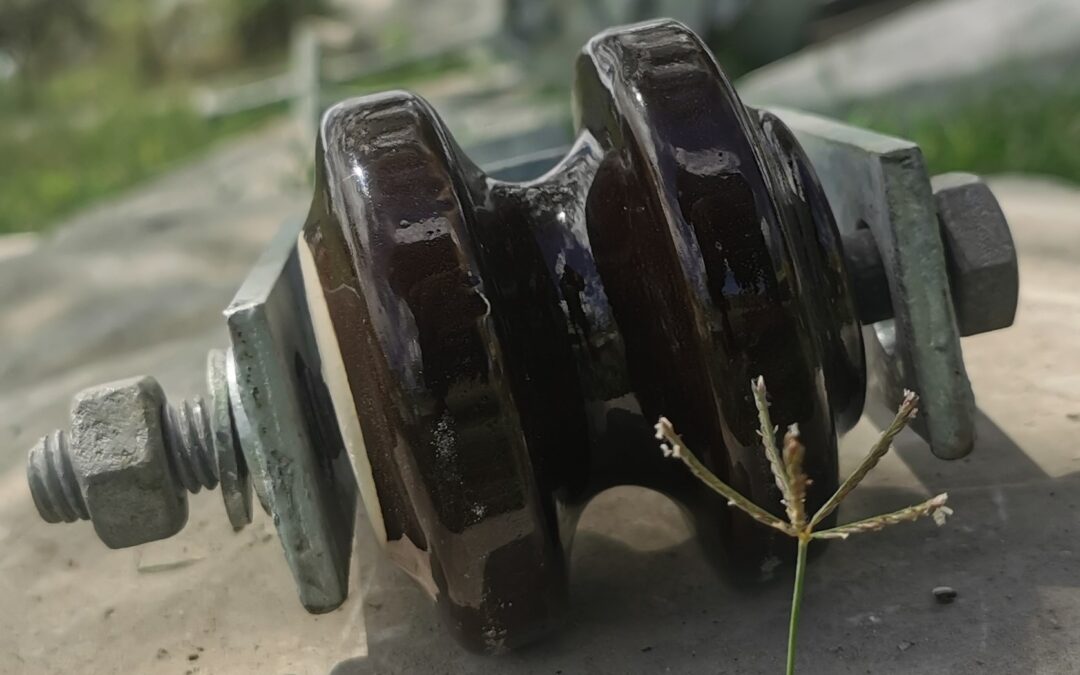A shackle insulator is a type of insulator used in electrical systems to support and insulate power lines. It is also known as a spool insulator. It comprises of a metal shackle attached to a ceramic or polymer insulator. shackle insulator helps to connect the insulator to the support structure and prevents flow of electricity through the support structure. Its main function of to provide insulation and mechanical support to conductors. Shackle insulators have a design able to withstand various environmental conditions. These include winds, temperature variations and pollution. Shackle insulators work in ADSS and OPGW cables to provide support and security. They also ease the installation and maintenance of ADSS and OPGW cables. This is by providing convenient connection points for technicians. Shackle insulators also prevent excess stress on the ADSS and OPGW cables.
Accessories used with shackle insulator
Shackle insulators work with different accessories to enhance functionality and ensures safe operation. Selection of these accessories depends on specific requirements of the electrical system. this includes voltage level, environmental conditions and structural design. The following are the common accessories used with shackle insulators.
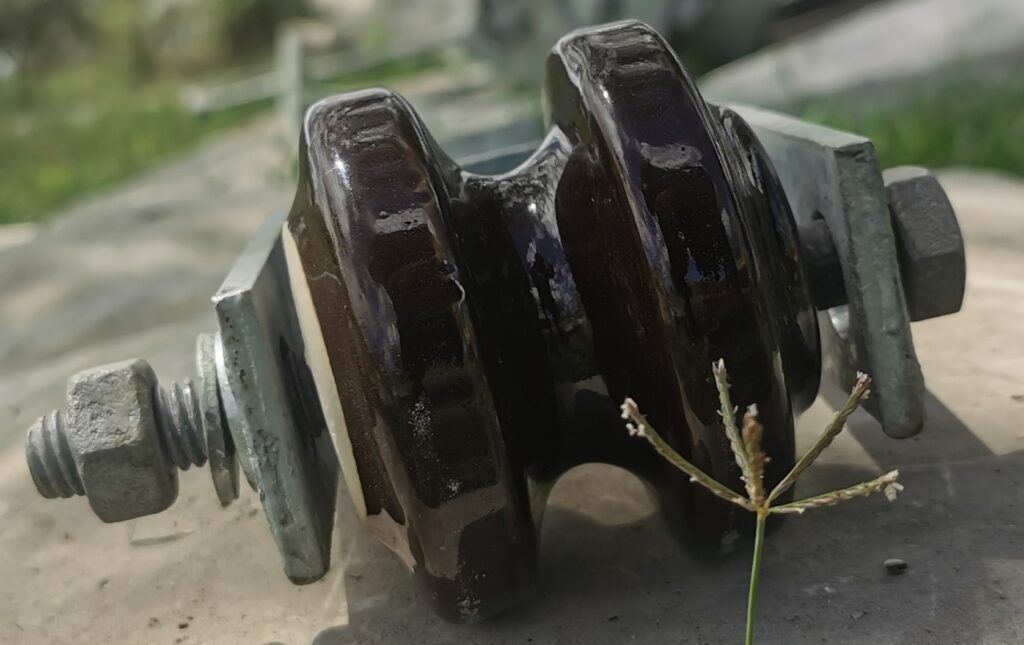
- Crossarms – these are horizontal beams attached to utility poles. They provide support for the shackle insulators.
- Shackle hardware – this includes bolts, nuts and washers. They help to secure the shackle insulator to the support structure.
- Guy wire attachment – these help to provide extra support and stability to utility poles. Guy wire attachments help secure the guy wires to the support structure.
- Vibration dampers – these help to reduce the amplitude of conductor vibration caused by wind. They can install between shackle insulators to dampen vibrations and prevent damage.
- Insulator covers – these help to provide extra protection to shackle insulators against environmental factors. They help to extend the lifespan of the insulators and maintain electrical performance.
- Spacer dampers – these are devices installed along the power lines to control the motion of conductors. They also help reduce the effects of wind-induced vibrations and maintain proper spacing.
- Corona rings – these help to reduce the corona discharge which occurs at high-voltage points along the power line. Installing corona rings close to the shackle insulators helps to reduce the risk of corona discharge.
Properties of shackle insulator
Shackle insulators have several properties that make them reliable electrical insulations. They contribute to the safe and efficient transmission of electricity. The following are the common properties of shackle insulators.
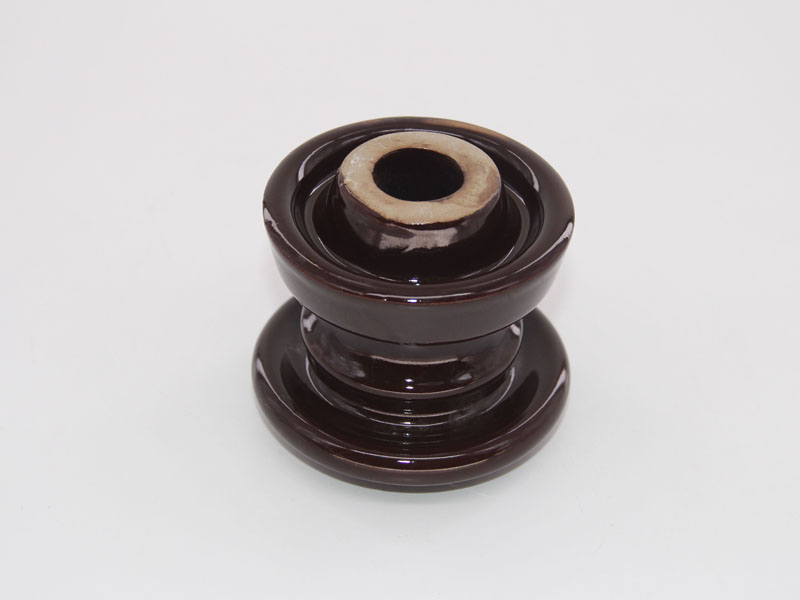
- Insulating material – the insulators are from high-quality materials like glass, polymer or porcelain. These materials prevent the flow of electricity through the insulator. It also ensures the safe transmission of power.
- Corrosion resistance – shackle insulators have designs to withstand conditions like moisture, pollution and UV radiation.
- Dimensional stability – shackle insulators have precise dimensions to ensure proper fit and alignment. They show minima l dimensional changes under load to maintain consistent performance.
- Hydrophobicity – shackle insulators may have a hydrophobic surface coating to repel water and prevent accumulation of moisture. This reduces the risk of surface flashover and electrical leakage in wet conditions.
- Mechanical strength – the insulators have designs to withstand mechanical stresses on the lines. These is including tension and compression. They have high mechanical strength to support the weight of the conductors and external forces.
- Thermal stability – the insulators should maintain their mechanical and electrical properties over a wide range of temperatures. They are capable of withstanding high and low temperatures without compromise.
- UV resistance – shackle insulators should be able to withstand UV radiation from sunlight. Polymer composite insulators have UV resistant additives to withstand exposure to sunlight.
- Lightweight – polymer composite shackle insulators are lightweight which makes them easy to handle and install.
Cost comparisons and considerations for shackle insulators
There are several factors that influence the cost of shackle insulators in the industry. This is including material, manufacturing processes and installation requirements. evaluating these factors help to make informed decisions when selecting the insulators. This also includes balancing upfront costs with long-term performance and reliability requirements. Prices for shackle insulators range between $5-$25 per set. The following are the common factors that influence the costs for shackle insulators.
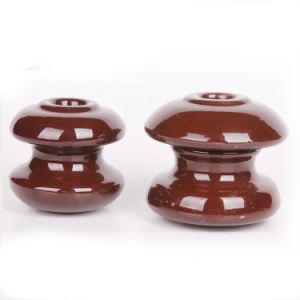
- Material cost – porcelain and glass insulators offer excellent electrical properties. Yet, they may be more costly due to material. Composite insulators are more expensive and offer lighter weight and reduced transportation costs.
- Installation requirements – polymer composite insulators are lighter and easier to handle than porcelain insulators.
- Long-term performance – consider the long-term reliability and performance of the shackle insulators. Polymer composite insulators provide improved resistance to damage, seismic events and dynamic loads.
- Manufacturing process – materials like glass and porcelain need specialized kiln firing processes. These can be time-consuming and expensive. Polymer composite insulators can use injection molding or pultrusion techniques. These offer cost advantages in production and efficiency.
- Maintenance needs – the maintenance needs of the insulators can impact their lifecycle costs. They may need periodic cleaning to prevent surface contamination and flashover.
- Total cost of ownership – consider the total cost of ownership over the expected lifespan of the insulator. This may include initial purchase price, installation costs, maintenance expenses and potential costs of system failures.
Working of a shackle insulator
The working of a shackle insulator includes providing electrical insulation and mechanical support. This helps to ensure the safe and reliable transmission of electricity. Working of shackle insulators is crucial for the reliable operation of electricals systems. Additionally, it is advisable to consult with professionals for guidance on the best insulators. The following is a description of how a shackle insulator works.
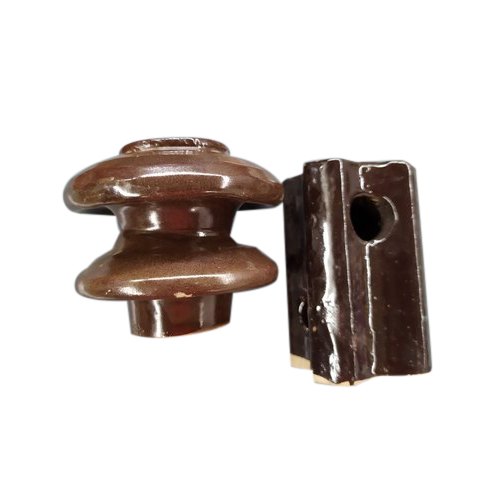
- Mounting – the shackle insulator attaches to the support structure like crossarm on utility poles. The shackle part connects to the support structure using bolts, nuts and washers.
- Attachment of conductors – the conductor then attaches to the shackle insulator using a suspension clamp. This holds the conductor in place while allowing for some movement to accommodate thermal expansion and contraction.
- Electrical insulation – the insulators provide electrical insulation between the conductor and the support structure. This prevents the flow of electricity from the conductor to the support structure.
- Mechanical support – the shackle insulators also serve as a mechanical support for the conductor. It helps to distribute the mechanical loads experienced by the conductor. This is including tension from weight of the line or wind-induced forces.
- Environmental protection – the insulators have designs to withstand a variety of environmental conditions. This is including UV radiation, moisture, pollution and temperature variations. Porcelain, glass and composite insulators provide resistance to these conditions to ensure durability.
- Maintenance – periodic inspections help to ensure their continued functionality in electrical systems. This may include visual checks for signs of damage or contamination.
Various testing for shackle insulators
Testing shackle insulators involves methos to ensure their integrity, electrical performance and suitability. These tests help to ensure the shackle insulators meet the necessary standards for safety, reliability and performance. Additionally, it is advisable to conduct regular testing and inspection. This helps to identify potential issues early.
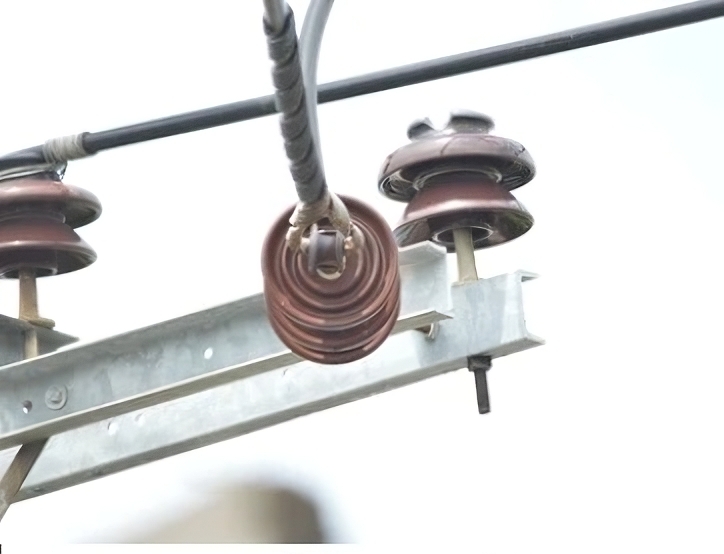
- Visual inspection – a visual inspection helps to assess the condition of the shackle insulators. Check for signs of damage like cracks, chips or surface contamination.
- Mechanical load testing – this checks the mechanical strength and load-bearing capacity of shackle insulators. It involves placing the insulator to the specified mechanical loads to ensure to can withstand the forces.
- Corona testing – this includes checking the corona performance of shackle insulators which can lead to power loss. It also involves testing the insulator’s ability to overpower corona discharge under high-voltage conditions.
- Vibration and dynamic testing – this include subjecting the insulators to vibration and dynamic testing. This tests their ability to withstand wind-induced vibration or conductor movement without failure.
- Dimensional checks – this includes verifying the length, diameter and other critical dimensions to ensure proper fit and alignment. These tests help to ensure the shackle insulators meet the specified tolerances.
- Electrical insulation testing – this evaluates the electrical integrity of the shackle insulators. They are mostly subjected to high-voltage tests to verify their ability to withstand the specified electrical stress. Insulation tests may also help to measure the resistance between the conductor and the support structure.
- Environmental testing – this involves testing their performance under various environmental conditions. It includes exposure to temperature extremes, moisture, pollution and UV radiation. This also helps to test their long-term durability and reliability in various applications.
- Quality control testing – shackle insulators undergo quality testing to ensure they meet specified standards. This includes material testing, dimensional checks and other quality assurance measures.
Frequently asked questions
A shackle insulator is a device used to provide electrical insulation and mechanical support. It prevents the flow of electricity from the conductor to the support structure.
Common tests include visual inspection, dimensional, check, mechanical load testing and electrical insulation. Others include corona testing, environmental testing and quality control during the manufacturing process.
Common issues include contamination, mechanical damage, electrical breakdown, corona discharge and degradation. Regular inspections and maintenance help to identify and address these issues before they lead to problems.

